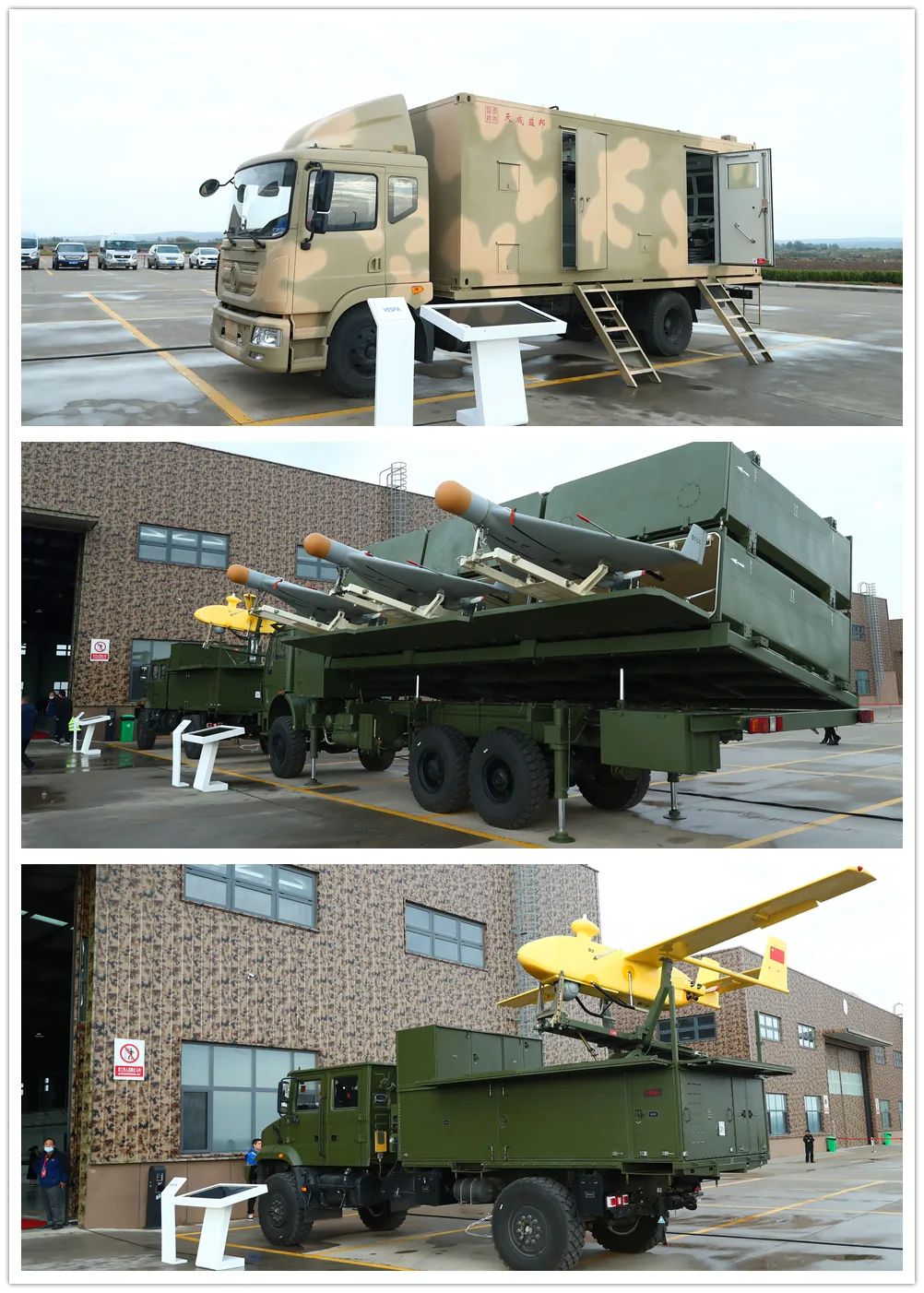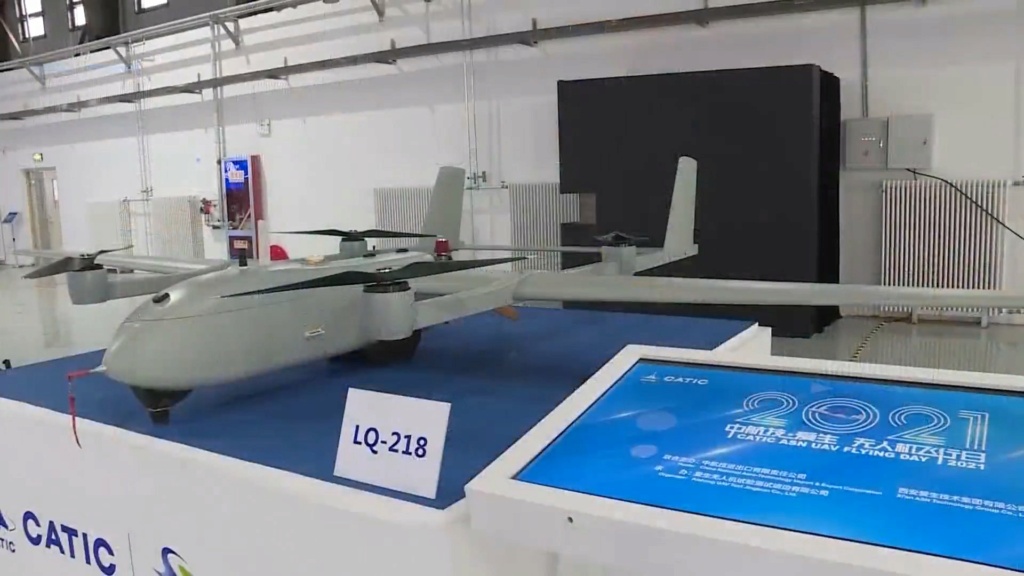Where is the third engine?
+12
Isos
Cyberspec
Tsavo Lion
JohninMK
MMBR
nomadski
max steel
George1
Russian Patriot
Admin
GarryB
nightcrawler
16 posters
Chinese UAVs

GarryB- Posts : 39672
Points : 40168
Join date : 2010-03-30
Location : New Zealand
- Post n°51
 Re: Chinese UAVs
Re: Chinese UAVs

Hole- Posts : 10982
Points : 10962
Join date : 2018-03-24
Age : 48
Location : Scholzistan
- Post n°52
 Re: Chinese UAVs
Re: Chinese UAVs
I think between the outriggers.

GarryB- Posts : 39672
Points : 40168
Join date : 2010-03-30
Location : New Zealand
- Post n°53
 Re: Chinese UAVs
Re: Chinese UAVs
The two outriggers are engine pods that the tail structure is attached to and the body pod down the centre does not have an engine at the front or the rear... I wonder if they are mistaken... perhaps there is an APU in one of the engine pods to make it more autonomous for deployment from basic air strips or sections of motorway...
Most civilian aircraft with three engines mainly use all three for takeoff but then only run two engines for more efficient cruise (it means the two main engines can be less powerful and more fuel efficient but allows the aircraft to still be able to take off normally from normal airfields)....
Most civilian aircraft with three engines mainly use all three for takeoff but then only run two engines for more efficient cruise (it means the two main engines can be less powerful and more fuel efficient but allows the aircraft to still be able to take off normally from normal airfields)....

George1- Posts : 18400
Points : 18897
Join date : 2011-12-22
Location : Greece
- Post n°54
 Re: Chinese UAVs
Re: Chinese UAVs
New deck-based unmanned aerial vehicle of helicopter type at the Chinese UDC of project 075
In the extreme photos from the Shanghai Hudong-Zhonghua Shipyard, where two Project 075 universal landing ships are afloat, Chinese military bloggers spotted an unmanned aerial vehicle on the deck of the main helicopter carrier, presumably a naval version of the AVIC AR500C with a lightweight radar with AFAR, the first flight of which held in May 2020.
The drone is designed for reconnaissance, target designation and relay.
The drone is capable of speeds up to 170 kilometers per hour and can fly at an altitude of up to four thousand meters. It is reported that the AR500C can spend up to 8 hours in the air and is equipped with a lightweight radar with an active phased array and a backlight function for moving targets.
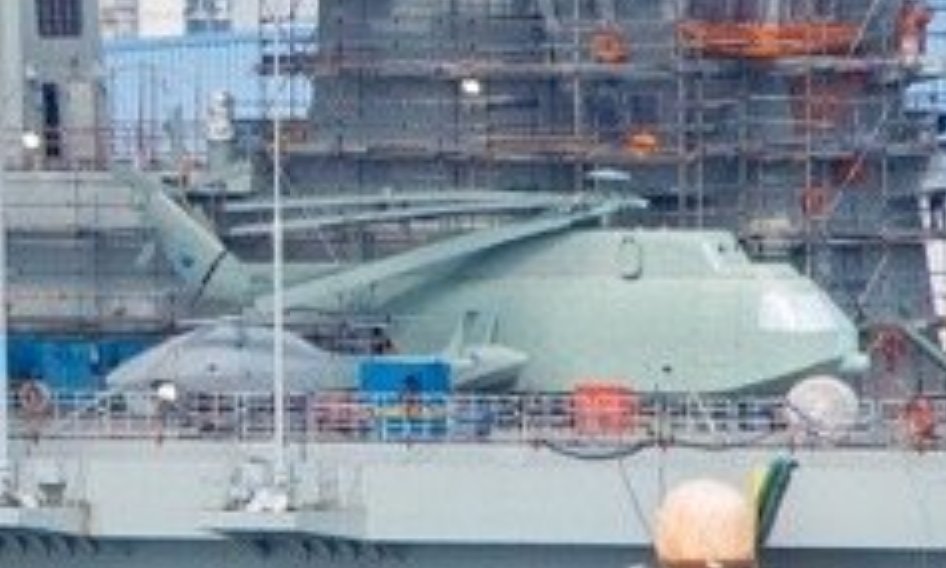
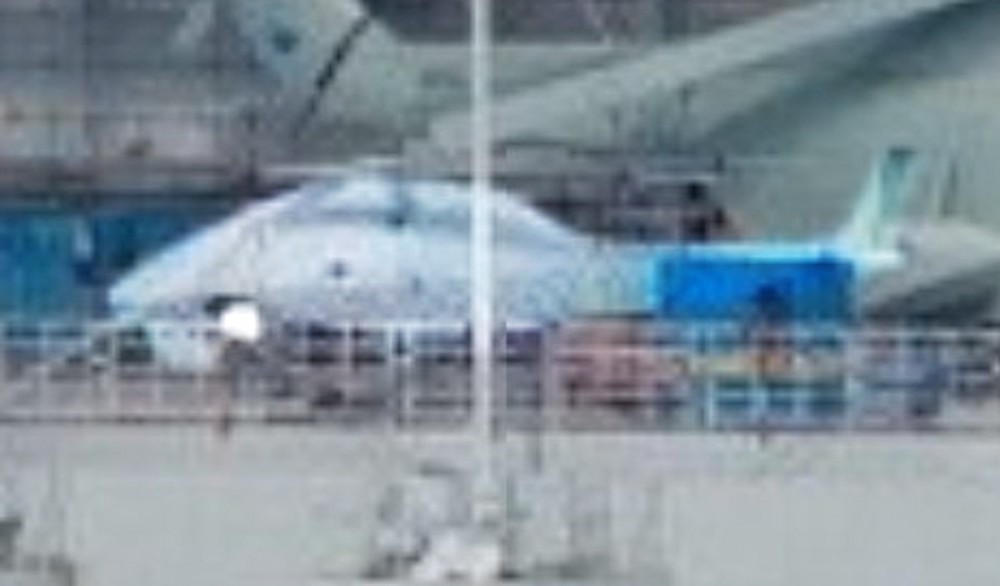
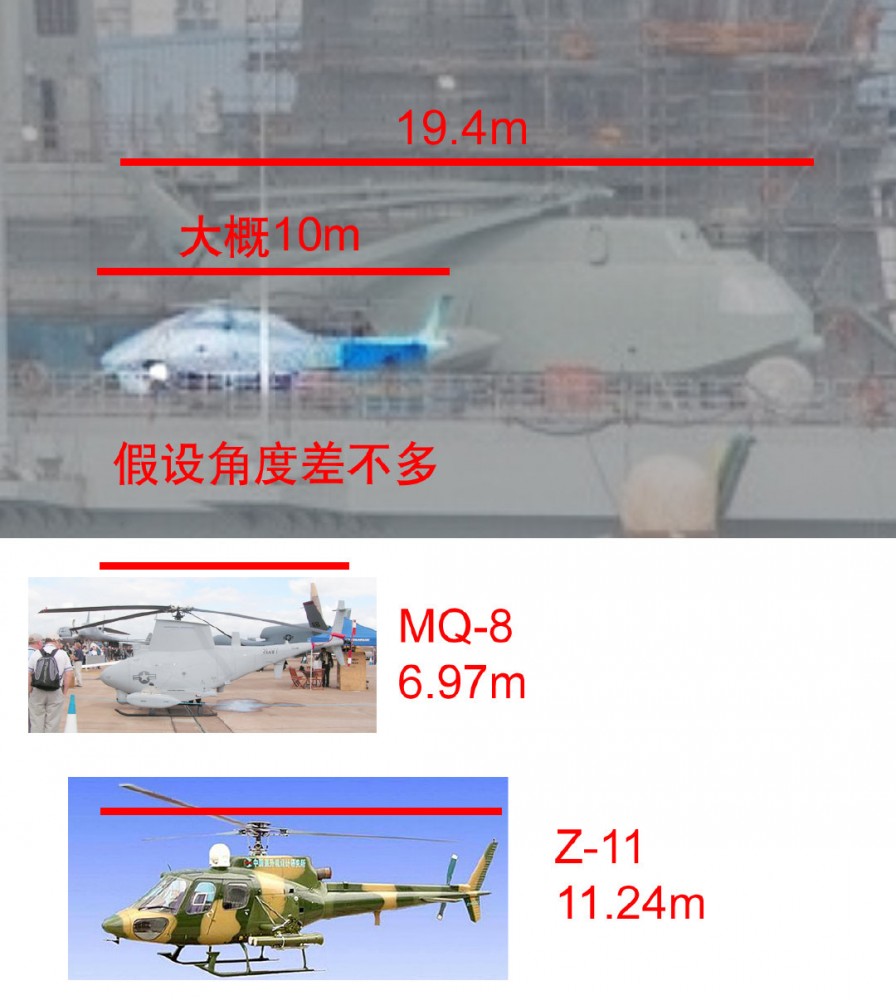
https://bmpd.livejournal.com/4073401.html
In the extreme photos from the Shanghai Hudong-Zhonghua Shipyard, where two Project 075 universal landing ships are afloat, Chinese military bloggers spotted an unmanned aerial vehicle on the deck of the main helicopter carrier, presumably a naval version of the AVIC AR500C with a lightweight radar with AFAR, the first flight of which held in May 2020.
The drone is designed for reconnaissance, target designation and relay.
The drone is capable of speeds up to 170 kilometers per hour and can fly at an altitude of up to four thousand meters. It is reported that the AR500C can spend up to 8 hours in the air and is equipped with a lightweight radar with an active phased array and a backlight function for moving targets.



https://bmpd.livejournal.com/4073401.html

GarryB- Posts : 39672
Points : 40168
Join date : 2010-03-30
Location : New Zealand
- Post n°55
 Re: Chinese UAVs
Re: Chinese UAVs
Have to be careful drawing lines on photos and comparing sizes... especially photos taken from great distances.
If you look carefully the unmanned helicopter is on one side of the deck and the big helicopter is on the far side of the deck... which actually makes it look smaller and the unmanned helo look bigger.
In that video they said it weighs 500kgs... perhaps they mistranslated it and it is 5 tons but that would make it rather heavy.
It does not look 10m long in the video.
Which really doesn't actually matter... the physical dimensions are not important... speed and endurance and range are.
Of course it is all well and good making an unmanned helicopter but helicopters on decks are dangerous... for those not familiar with helicopters it is easier to fly them nose in to the wind... on a ship like an aircraft carrier the air can be swirling because the wind will be coming from a direction and can change but also if the ship starts moving the air over the deck can radically change direction in a second.
A helicopter just taking off or just landing will cope with a wind direction or wind speed change by turning its nose in to the wind and flying forward or backward to maintain position on the deck... that means in a conventional helicopter design the tail could be swung without any warning in any direction and lifted up or dropped down... the tail rotor is the most dangerous part of a helicopter on a deck... it is why Kamov with their coaxials dominate Soviet and Russian naval helicopter production and design because coaxials are much less sensitive to cross winds and gusts.
In the video he talks about engines losing power at altitude and their superior engine technology that solved the problem... makes me think they changed from a piston engine to a gas turbine...
If you look carefully the unmanned helicopter is on one side of the deck and the big helicopter is on the far side of the deck... which actually makes it look smaller and the unmanned helo look bigger.
In that video they said it weighs 500kgs... perhaps they mistranslated it and it is 5 tons but that would make it rather heavy.
It does not look 10m long in the video.
Which really doesn't actually matter... the physical dimensions are not important... speed and endurance and range are.
Of course it is all well and good making an unmanned helicopter but helicopters on decks are dangerous... for those not familiar with helicopters it is easier to fly them nose in to the wind... on a ship like an aircraft carrier the air can be swirling because the wind will be coming from a direction and can change but also if the ship starts moving the air over the deck can radically change direction in a second.
A helicopter just taking off or just landing will cope with a wind direction or wind speed change by turning its nose in to the wind and flying forward or backward to maintain position on the deck... that means in a conventional helicopter design the tail could be swung without any warning in any direction and lifted up or dropped down... the tail rotor is the most dangerous part of a helicopter on a deck... it is why Kamov with their coaxials dominate Soviet and Russian naval helicopter production and design because coaxials are much less sensitive to cross winds and gusts.
In the video he talks about engines losing power at altitude and their superior engine technology that solved the problem... makes me think they changed from a piston engine to a gas turbine...

Hole- Posts : 10982
Points : 10962
Join date : 2018-03-24
Age : 48
Location : Scholzistan
- Post n°56
 Re: Chinese UAVs
Re: Chinese UAVs
PapaDragon and Belisarius like this post

lancelot- Posts : 2872
Points : 2870
Join date : 2020-10-18
- Post n°57
 Re: Chinese UAVs
Re: Chinese UAVs
Hole and Belisarius like this post

Walther von Oldenburg- Posts : 1714
Points : 1833
Join date : 2015-01-23
Age : 33
Location : Oldenburg
- Post n°58
 Chinese army drones
Chinese army drones
Question - does China possess an equivalent of Getan 2 and Lancet drones?

GarryB- Posts : 39672
Points : 40168
Join date : 2010-03-30
Location : New Zealand
- Post n°59
 Re: Chinese UAVs
Re: Chinese UAVs
It comes down to need.
Geran has a long flight range and a good payload so such a weapon would be very good for China, but with Lancet, it is evolving into an interesting system.
There is nothing magic about either system where you would say China or any other country couldn't make them, but having said that 10 years ago Russia didn't have either system either... and the military had no real plans for anything like them at the time.
Now that they have had drones used against them and have developed and used drones for themselves they recognise that in some areas they are very useful, and other areas not so much so they have not stopped making artillery and artillery shells and tanks and armoured vehicles to concentrate on making drones, but their drone production rate has increased immensely.
I am sure Russian troops and Chinese troops will train together and I am sure China will notice the massive increase in drone numbers and use in the Russian military and will take note of that and probably look to their own way of fighting and how that might fit in and be useful for them too.
In the 1990s most of my friends asked me what the internet was and why they would use it... these days they download more movies and programmes than they watch on normal TV.
Equally, I remember in the 1980s a few business types had cellphones. They were called brick because they were the size of housebricks with their enormous batteries and large antenna. Most people thought such people were weird and probably had big egos because they could not do without a land line when they were travelling around. In the 1990s and early 2000 more people started to use them, but when the first digital cameras came out and they started attaching them to phones most people wondered why everyone needed a camera with them all the time let alone a phone. These days the quality of the images is much better... I had some very disappointed relatives who thought the camera on their phone was a camera so it should produce great high resolution high quality images. They didn't understand the quality settings on their phones so they set them to allow the greatest number of images possible. They took important photos of children and family and it was only when they talked to me about it that they realised their mistake. When an image looks good on a cellphone screen it does not necessarily look good on an A4 printed page or even a TV screen... where it looks worse than useless.
The Chinese are smart and drones are cheap, so it is not like a super expensive risk to buy some.
Geran has a long flight range and a good payload so such a weapon would be very good for China, but with Lancet, it is evolving into an interesting system.
There is nothing magic about either system where you would say China or any other country couldn't make them, but having said that 10 years ago Russia didn't have either system either... and the military had no real plans for anything like them at the time.
Now that they have had drones used against them and have developed and used drones for themselves they recognise that in some areas they are very useful, and other areas not so much so they have not stopped making artillery and artillery shells and tanks and armoured vehicles to concentrate on making drones, but their drone production rate has increased immensely.
I am sure Russian troops and Chinese troops will train together and I am sure China will notice the massive increase in drone numbers and use in the Russian military and will take note of that and probably look to their own way of fighting and how that might fit in and be useful for them too.
In the 1990s most of my friends asked me what the internet was and why they would use it... these days they download more movies and programmes than they watch on normal TV.
Equally, I remember in the 1980s a few business types had cellphones. They were called brick because they were the size of housebricks with their enormous batteries and large antenna. Most people thought such people were weird and probably had big egos because they could not do without a land line when they were travelling around. In the 1990s and early 2000 more people started to use them, but when the first digital cameras came out and they started attaching them to phones most people wondered why everyone needed a camera with them all the time let alone a phone. These days the quality of the images is much better... I had some very disappointed relatives who thought the camera on their phone was a camera so it should produce great high resolution high quality images. They didn't understand the quality settings on their phones so they set them to allow the greatest number of images possible. They took important photos of children and family and it was only when they talked to me about it that they realised their mistake. When an image looks good on a cellphone screen it does not necessarily look good on an A4 printed page or even a TV screen... where it looks worse than useless.
The Chinese are smart and drones are cheap, so it is not like a super expensive risk to buy some.

lancelot- Posts : 2872
Points : 2870
Join date : 2020-10-18
- Post n°60
 Re: Chinese UAVs
Re: Chinese UAVs
Chinese weapons companies have several weapons similar to the Geran 2 that they offer for export.Walther von Oldenburg wrote:Question - does China possess an equivalent of Getan 2 and Lancet drones?
Now the question is if the government is purchasing these weapons and deploying them to the troops or not.
Some Chinese military units have operated quadcopters for reconnaissance for quite some time already. But I think their army is still behind in terms of deployed offensive drone technology. They do have a huge industry though so this is something they could easily solve if their government just ordered these weapons systems. There might be institutional issues with adopting such weapons systems without having the proper doctrine in place. Which means they still don't use such systems in main use.
|
|
|



